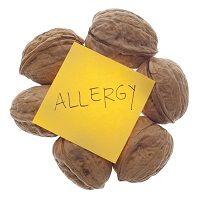Article
Food Allergies & Financial Repercussions
Author(s):
Numerous studies have attempted to quantify the medical toll that severe food allergies inflict upon children. Now, a study from Sweden provides new data about the financial toll they inflict upon families.

Numerous studies have attempted to quantify the medical toll that severe food allergies inflict upon children. Now, a study from Sweden provides new data about the financial toll they inflict upon families.
Researchers recruited 84 children and 60 adolescents at risk of anaphylaxis because of allergies to cow’s milk, hen’s eggs, and/or wheat. Then, they compared annual household expenditures from patient families with household expenditures from the families of control subjects with no allergies.
On average, families spent €3,961 ($4,324) more each year on allergic children and €4,792 ($5,230) more each year on allergic adolescents than they did on comparable controls with no allergies (P < .05).
These calculations included both direct costs such as medication expenditures and indirect costs such as time spent in medical offices. A history of anaphylaxis was associated with still higher costs in children — €13,016 vs. €10,044 for allergic children with no history of anaphylaxis; P < .05 — but not in adolescents.
“Households with young children allergic to staple foods may seek to purchase allergen-free staple foods, which are often more expensive than traditional staple foods. Likewise, these households may also seek significantly more contact with health care professionals than households without a food allergic child,” the study authors wrote in The Journal of Allergy and Clinical Immunology: In Practice.
Allergy-related expenses, both direct and indirect, varied relatively little among households with younger children, but they varied considerably among households with older children.
Indeed, average additional direct costs were nearly 50% higher in the latter group, but variance was so high that results were insignificant (p = 0.148). Variance of indirect expenses among families of adolescent patients was also high enough to make for insignificant results. (It was only by combining the 2 types of expenses that results were considered significant.)
The researchers offered several possible explanations for the fact that some households with adolescent patients faced far lower costs than most households with younger patients while others faced far higher costs.
“Households with food allergic adolescents may have normalized their lives and seek health care professionals' services less often,” either because they learn to manage the condition or because kids outgrow it. What’s more, they noted, many adolescents “begin to develop skills to cope with their food allergy (eg, bringing ‘safe’ foods to social events, inquiring restaurant-prepared foods, reading food labels).”
Other adolescents, however, could generate big costs by intentionally doing just the opposite.
“Adolescents may engage in more risk-taking behaviors, including knowingly consuming unsafe foods or failing to carry an adrenaline autoinjector,” the study authors wrote. “These behaviors may warrant more regular contact with health care professionals and, subsequently, greater lost household earnings. This theory also aligns with our observation that food allergy severity, concomitant allergic disorders, and the number of offending foods were associated with indirect costs among adolescents.”
Translating costs from Sweden to the United States is difficult because the prices of different goods and services vary significantly. That said, the findings of the Swedish study generally agreed with those from an earlier American study that took a very different approach to calculating the cost of severe childhood allergies.
That study, which appeared in JAMA Pediatrics, surveyed the caregivers of 1,643 children with diagnosed food allergies and found overall costs that totaled $4,184 per child, per year — a figure that included both direct expenditures and indirect expenses such as work missed for a child’s medical appointments.





